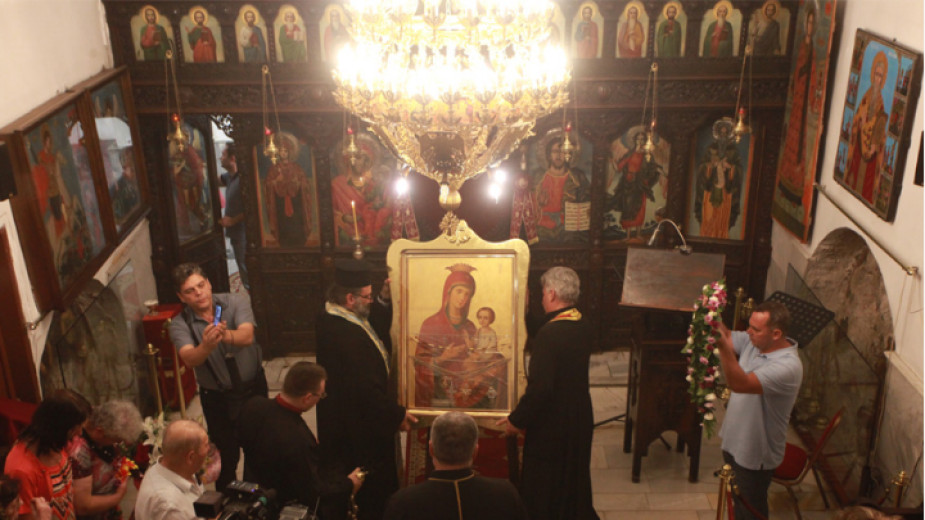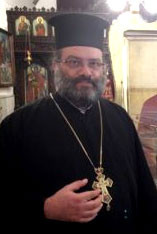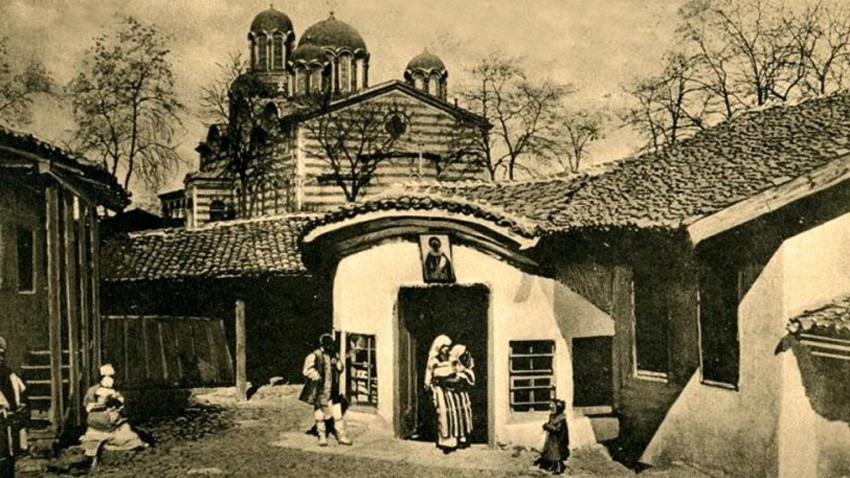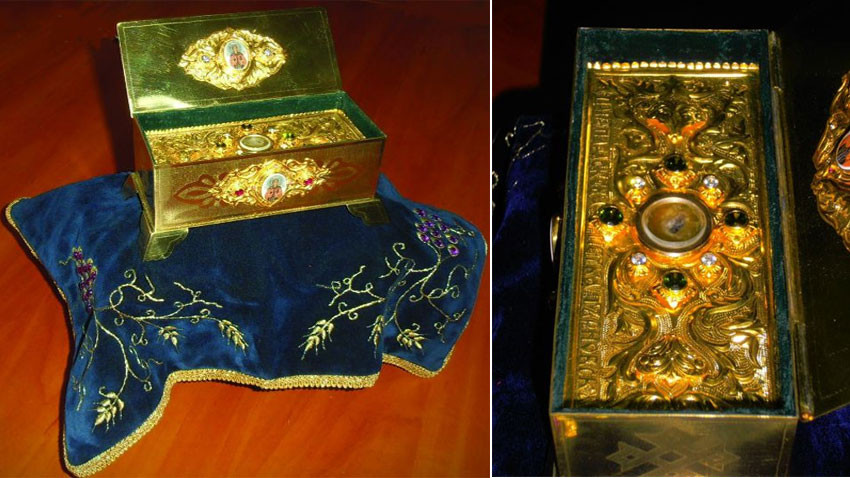 7
7
The central part of Bulgari’s capital Sofia abounds with cultural and architectural monuments which are evidence of the millennial history of the city. The ancient temple Saint Petka Stara is one of the spiritual monuments situated downtown Sofia. The church is dedicated to St Paraskeva Petka, born in Epivat (Thrace) in the 11th century. The memory of Saint Petka is honored on October 14, Father Nikolay father Nikolay told Radio Bulgaria and adds:

 On the southern gate of the church there is a table Ancient Temple St Petka 1241. That means that in 1241 the temple was either renovated or newly-built on old foundations in honor of Saint Paraskeva Patka whose relics were brought to Veliko Tarnovo which was at that time a capital of the Bulgarian Kingdom. Earliest written evidence about the existence of this temple is kept in the registers from the 16th century. According to these registers, the Orthodox Bulgarians in Sofia lived in 16 neighborhoods at that time. The Sofia Bishopric and Saint Petka temple were the only spiritual centers in Sofia in that period. The written evidence of the German traveler Stephan Gerlach who mentioned about Saint Petka Stara church within the Sofia Bishopric also dates back to the 16th century.
On the southern gate of the church there is a table Ancient Temple St Petka 1241. That means that in 1241 the temple was either renovated or newly-built on old foundations in honor of Saint Paraskeva Patka whose relics were brought to Veliko Tarnovo which was at that time a capital of the Bulgarian Kingdom. Earliest written evidence about the existence of this temple is kept in the registers from the 16th century. According to these registers, the Orthodox Bulgarians in Sofia lived in 16 neighborhoods at that time. The Sofia Bishopric and Saint Petka temple were the only spiritual centers in Sofia in that period. The written evidence of the German traveler Stephan Gerlach who mentioned about Saint Petka Stara church within the Sofia Bishopric also dates back to the 16th century.
Saint Petka Stara (Old) is the oldest temple in Sofia dedicated to Saint Petka or Paraskeva, father Nikolay says. There is another church downtown Sofia named after the saint – Saint Petka Samardzhiyska (Saint Petka of the Saddlers) dedicated to Martyr Paraskeva of Iconium (Asia Minor) who lived in the 3rd and the 4rth century AD.

Saint Petka Stara is a small single nave building partially dug into the ground. It is on a level with the Rotunda of Saint George which is situated nearby and dates back to the 4th century. That is why some contemporary researchers contend that the temple was built in the 8th century as part of the royal palace complex of Sebastocrator Kaloyan, ruler of Sreteds (now Sofia). According to another hypothesis, a metropolitan complex existed separately from the palace complex and Saint Petka temple was part of this ancient church complex.

The church was not destroyed, closed or turned into a mosque during the Ottoman Rule, father Nikolay further says. Saint Petka Samardzhiyska temple was renovated during the Ottoman period. In his book Diary of a Journey to the Ottoman Gate in Tsarigrad Stephan Gerlach described Saint Petka church as a modest one-nave building with wonderful frescoes. Some 15 century frescoes can be seen now in the niches situated close to the holy altar. The frescoes were dated by restoration team that worked in the church between 2001 and 2002. Saint Petka Stara church has been inseparably connected with the Sofia Bishopric since its foundation and has played an important part in the lives of the Orthodox Christians.

The Bulgarians honor and regard Saint Petka as a patron saint. The church attracts Christians and pilgrims with its numerous relics.
One of the oldest relics in this church is the tree on which Martyr Terapontius of Sofia was tortured to death. His memory is honored on May 27, father Nikolay says. There are many ancient icons dated to the 18th and the 19th century such as the miraculous icon of Reverend Petka-Paraskeva. Its ark contains a piece of the relics of Saint Petka and part of the life-giving holy cross. Fortunately, in 2018 we had the chance to touch the holy relics of Saint Petka-Paraskeva kept in the city of Iasi (Romania) thanks to Bulgarian Patriarch Neophyte.

Pieces of relics of Saint Theodore Stratelates, Saint Haralampius and Saint Panteleimon are also kept in the holy altar of Saint Petka Stara church. A slipper of Saint Spyridon of Tremithus which was sanctified near his relics at Corfu Island is kept in a special proskynetarium in our temple. May God bless all people and bring them health, joy and power, father Nikolay concludes.
English version: Kostadin Atanasov
Photos: bg.wikipedia.org и hramsvetapetka.orgArchaeologists have explored a necropolis in the Kavatsi area near Sozopol. The perimeter in which it is located is part of the history of Apollonia Pontica and is dated to the 4th century BC. "This is a site with interesting burials in which a nuance..
On November 10, 1989, at a plenum of the Central Committee of the Bulgarian Communist Party, Todor Zhivkov was removed from the position of General Secretary - the highest position in the party and the state. What happened at the..
Archaeologists have discovered a very rare and valuable glass bottle in a 2nd-century tomb in the southern necropolis of the Roman colony Deultum near the village of Debelt (Southeastern Bulgaria). What makes it unique is that it depicts the myth of..
On November 25, the Bulgarian Orthodox Church honours the memory of St. Clement of Ohrid – a distinguished archbishop, teacher and scholar. He was among..

+359 2 9336 661
